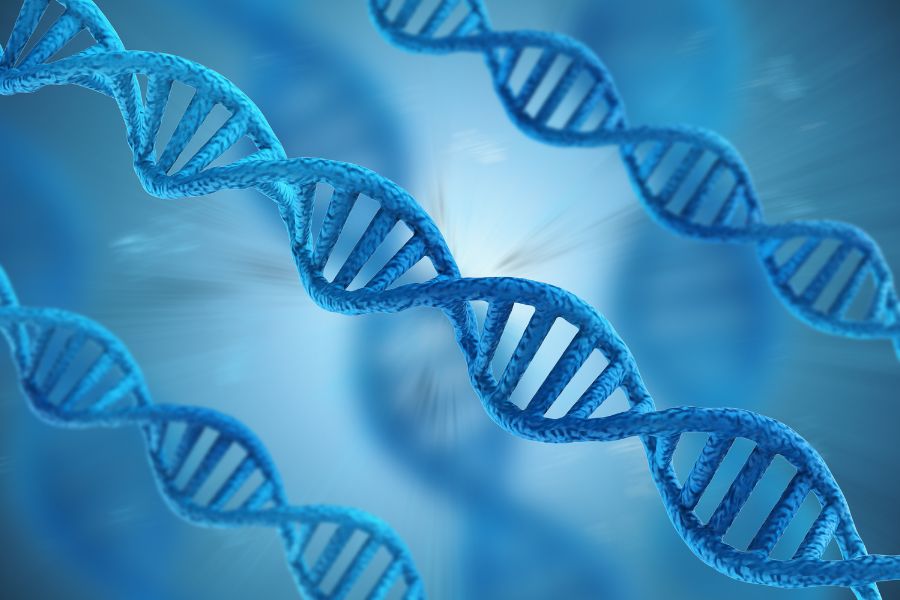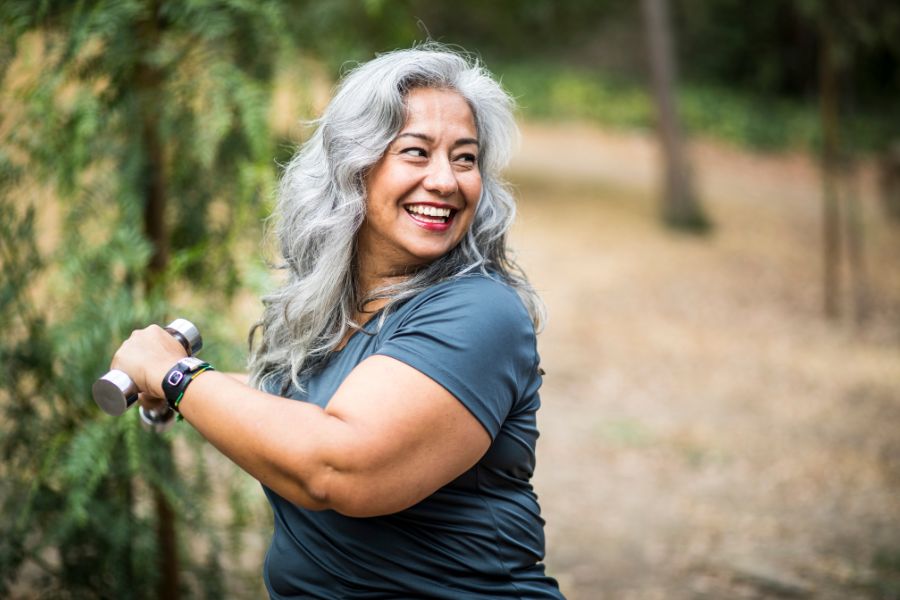Body composition is one of the most important factors to consider when assessing your overall health.
It goes beyond simple numbers like weight and height, offering deeper insight into the ratio of fat, muscle, bone, and other tissues in your body.
Many people focus only on weight as a measure of health, but body composition provides a more accurate picture of how your body is built and how healthy it truly is.
Understanding body composition can help you create more effective fitness goals, improve your well-being, and reduce health risks.
What Is Body Composition?

Body composition refers to the percentages of fat, bone, water, and muscle in the body.
It’s typically divided into two main categories:
- Lean Mass: This includes muscles, bones, organs, and fluids—everything in your body that isn’t fat.
- Fat Mass: This is the total weight of all the fat tissue in your body.
When we talk about improving body composition, we’re generally aiming to increase lean mass (especially muscle) while reducing fat mass.
Two people can weigh the same but have very different body compositions.
One person may have more muscle, while the other may have more fat, and that difference can affect their health, appearance, and overall fitness.
Why Does Body Composition Matter?
Body composition is a far better measure of health than just weight alone. Here’s why:
Better Indicator of Fitness
You may be working hard to lose weight, but if you’re building muscle at the same time, the scale might not show much change.
That’s because muscle weighs more than fat. If you’re only using weight as a metric, it can be discouraging.
However, by looking at your body composition, you’ll see progress in the form of reduced fat and increased muscle mass.
Health Risks
Too much body fat, especially around the abdomen, is linked to various health conditions like heart disease, diabetes, and even certain types of cancer.
Understanding your body composition can help you better assess your risks and take the necessary steps to improve your health.
Customized Goals
Knowing your body composition helps you set more realistic and personalized fitness goals.
For example, if you find that you have a high percentage of fat but relatively low muscle mass, you might want to focus on strength training to build muscle rather than just cutting calories to lose weight.
How Is Body Composition Measured?
There are various ways to measure body composition, ranging from simple methods to more advanced techniques:
BMI (Body Mass Index)
While BMI is commonly used, it’s not the best tool for measuring body composition.
It’s a simple calculation based on height and weight, but it doesn’t differentiate between muscle and fat.
This means that muscular people might fall into the “overweight” or “obese” categories despite having a healthy body composition.
Body Fat Percentage
In the 1980s, the US Navy developed a widely used and generally accepted method for estimating body fat percentage.
The method was based on research conducted by the Navy, which analyzed the relationship between height, weight, neck circumference, and body fat percentage in a large group of individuals.
While still an estimate, and not perfectly accurate for everyone, it is a better measure than BMI.
Skinfold Measurements
A more hands-on approach, skinfold calipers are used to pinch the skin and measure the thickness of fat in specific areas of the body.
This method estimates body fat percentage but requires some skill to get accurate results.
Bioelectrical Impedance Analysis (BIA)
Many modern scales come with BIA technology, which sends a harmless electrical current through the body to estimate body fat and muscle percentage.
It’s easy to use but can vary in accuracy depending on hydration levels.
DEXA (Dual-Energy X-ray Absorptiometry)
This advanced method provides highly accurate body composition readings. It uses X-rays to measure fat, muscle, and bone density.
DEXA scans are typically done in medical or clinical settings and are considered one of the most precise ways to assess body composition.
Hydrostatic Weighing
Known as the “gold standard” for measuring body composition, this involves submerging a person in water to measure body density and fat percentage.
However, it’s not commonly accessible for everyday use due to the equipment required.
Factors That Influence Body Composition

Many factors influence your body composition, and it’s important to understand that it’s not just about eating less and exercising more.
Here are some key influences:
- Genetics: Your genes play a role in how your body stores fat and builds muscle. Some people may naturally have a higher or lower body fat percentage due to their genetic makeup.
- Age: As we age, we tend to lose muscle mass and gain fat. This is a natural process, but staying active and engaging in strength training can help combat this decline.
- Gender: Men and women naturally have different body compositions. Women tend to carry more body fat than men, especially around the hips and thighs, while men usually have more muscle mass.
- Activity Level: Exercise, especially strength training, can help build muscle and reduce fat. Sedentary lifestyles, on the other hand, can lead to muscle loss and fat gain over time.
- Nutrition: Your diet plays a significant role in shaping your body composition. Eating a diet rich in lean protein, healthy fats, and whole grains can help you maintain or improve muscle mass while reducing fat.
How to Improve Your Body Composition

Improving your body composition doesn’t mean obsessing over the scale or striving for extreme fat loss.
The goal should be to build a healthy, balanced body.
Here are some key strategies:
- Strength Training: Lifting weights or doing resistance exercises is one of the best ways to build muscle and improve body composition. Even if your main goal is fat loss, strength training is crucial because it helps you maintain muscle mass while shedding fat.
- Cardio: Aerobic exercises like running, swimming, or cycling can help burn fat. Combining both strength training and cardio will give you the best results for improving body composition.
- Healthy Eating: Focus on a balanced diet that provides the nutrients your body needs. Prioritize lean proteins (chicken, fish, tofu), healthy fats (avocados, olive oil), and complex carbohydrates (whole grains, vegetables). Avoid processed foods and excess sugar, which can contribute to fat gain.
- Get Enough Sleep: Sleep is essential for muscle recovery and fat loss. Lack of sleep can disrupt your hormones, leading to increased hunger and decreased energy levels.
- Stay Consistent: Body composition doesn’t change overnight. It takes consistent effort and patience. Aim to make healthy lifestyle changes that you can stick to over the long term, rather than focusing on quick fixes or fad diets.
Understanding Your Results
Once you measure your body composition, you might wonder how to interpret the numbers.
It’s important to remember that healthy body fat percentages vary by age, gender, and fitness level.
The American Council on Exercise categorizes body fat into different groups based on how much fat is healthy for our bodies.
Each category helps us understand if our body fat is right for staying healthy and strong:
| Description | Women | Men |
|---|---|---|
| Essential Fat | 10-13% | 2-5% |
| Athletes | 14-20% | 6-13% |
| Fitness | 21-24% | 14-17% |
| Average | 25-31% | 18-24% |
| Obese | 32+% | 25+% |
The American Council on Exercise (ACE) Body Fat Categorization
If your body fat falls in the obese range, don’t panic!
Use it as motivation to start making changes, but remember that body composition is just one piece of the health puzzle.
It’s about progress, not perfection.
Conclusion
Understanding body composition can offer a more complete picture of your health than simply looking at weight or BMI.
By focusing on improving the balance of fat and muscle in your body, you can work towards better overall health and fitness.
Whether your goal is to build muscle, lose fat, or just become more active, knowing your body composition is a great starting point.
With the right approach to exercise, nutrition, and lifestyle, you can create a healthier and more balanced version of yourself.

Leave a Reply